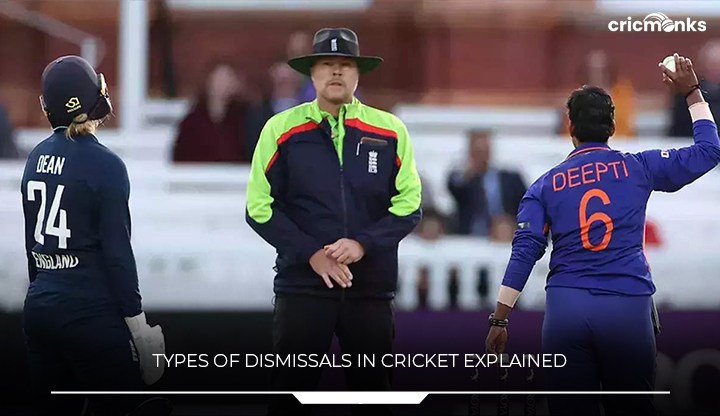
Dismissals in Cricket
Dismissal is a term associated with the game of cricket in which the batter has to end his chances of batting in the game. Dismissals are otherwise termed as getting out in cricket. It simply means that the batter would no longer be able to score runs for his team and has to pass the chance to the succeeding batter. There are many modes of dismissals in which a batter can be termed “out” resulting in the end of their batting innings. The fielding team has to get 10 dismissals to terminate the batting side’s innings because they begin with ten wickets in hand.
After the end of the first innings, the fielding team will now have to switch sides and begin batting. The cycle happens, with the new batsman holding ten wickets of the side that fielded first. This is fundamentally the goal of cricket, which is the reason for a dismissal becoming crucial and important in the match. Defending teams get a benefit by taking 10 wickets for a low score. Likewise, by preserving those wickets together and accumulating as many runs as feasible, the batting team gains an edge.
The batter scoring runs is highly important for the total outcome of the match because in the end, the side with the most runs is the obvious winner in the game of cricket. There are also some rare cases in which the batter is unable to score even a single run and is out for zero which is termed as duck. According to the recorded laws of cricket there are ten different ways of dismissals in cricket. Dismissals play a crucial role in the end result of a cricket game. Let’s take a look at all the different kinds of dismissals in the game of cricket.
Caught
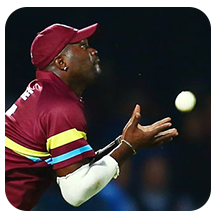
The most popular mode of dismissal is the caught wicket which comes under the law 33. It states that the ball has to hit the bat of the batter and then any of the fielder has to catch the ball before it bounces anywhere on the ground. There are primarily two conditions to be addressed before calling a caught wicket. Firstly, it should be a legal delivery and then it should be a fair catch. The fielder has to be in control of the catch for at least three seconds in order for the umpire to term the catch as fair. Outfielders’ catches are typically clear-cut, therefore the role of the umpire is not required to declare. The wicketkeeper’s catches in which the ball touches the side of the bat are the common exception to this rule.
The batter does have liberty to maintain their position and let the umpire decide if or not the batter is still out. These are several aspects of the law that must be noted. To be considered clean, the ball should not strike the grass before reaching the outfielder or be in impact with the field at the time the catch is completed. There are instances where the field may have caught the ball cleanly and later lost possession of the ball.
The outfielder should have complete command of the ball upon releasing it and it should not come into touch with the boundary marks.If all of the above conditions are satisfied, the catch is considered fair, and the batter is dismissed. Caught represents the most prevalent method of dismissal in cricket, accounting for more than half of all wickets. Data reveals that 58.6% of dismissals are caught in test cricket, which can be comparable in other formats.
Bowled Out
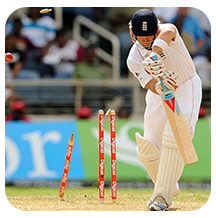
Bowled is a bowler’s ultimate happiness. Evey bowler dreams of knocking the bails and uprooting stumps to get the wicket of the batter on strike. This mode of dismissal comes under the 32nd law of cricket. If a legitimate ball contacts the stump and knocks it away, the batter is considered dismissed. At least a single bail must be removed and fallen to the ground for such wicket to be considered as out. The ball could hit the stumps without being obstructed, or it could hit the blade or indeed any portion of the batter’s body prior to hitting the stumps.
It is one of the dismissals in which the umpire is not required to rule the wicket as given. It is so obvious that the batter has to walk back if at all the bails are blown away with the ball. There are instances where the ball touching the stumps evades from falling on the ground. In such cases, the batters are considered lucky to remain not out.
This particular mode of dismissal is very common across different formats of cricket and it is recorded that 21% of batters are usually dismissed in this manner.
Leg Before Wicket (LBW)
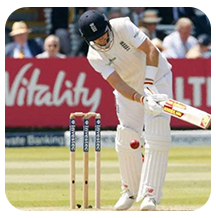
LBW dismissals are somewhat complicated and are given out only by the umpire. Both the batter and the bowler should wait for the verdict of the umpire to rule the dismissal as out. This mode of dismissal comes under the law 36 and it was introduced into the game to prevent batters from taking advantage of themselves by preserving the ball from hitting the wickets using their leg or any other part of the body. In leg before wicket dismissal, a batter can be dismissed if a delivery hits any of the body parts that are adjacent to the stumps. The delivery has to be legal and shouldn’t necessarily hit the legs also.
The LBW statute has several restrictions that constitute it among the more complicated of all dismissals. The first rule is that the ball could never pitch beyond the leg stump, and if that is determined to have happened, the batsman shall not be declared out. The ball should also strike the wickets. If the batter is performing a stroke and the ball is considered to already have impacted him beyond off stump, lbw cannot be maintained. Nevertheless, LBW is permitted if the batter is really not executing a stroke. Lastly, LBW cannot be called if the ball strikes the stick or the batter’s gloves prior to impacting the batter’s body.
LBW decisions are totally up to the umpire’s discretion. The fielders will make a challenge, and the verdict will be made by the umpire. According to LBW statistics, 14.4% of all hitters are ejected using this approach. It will be fascinating to observe if those figures have grown after the Decision Review System was implemented (DRS). There will be three ways of looking into the LBW wicket decision. Firstly it has to pitch in line or outside the off stump. Secondly, the ball has to make an impact in line with the stumps if the batter has attempted a stroke and the impact doesn’t count if the batter does not play any strokes. At last, the ball has to be hitting the stumps.
To avoid controversy, the law of umpires call is implied in DRS in which if any of the the above mentioned stands only half chance, then the third umpire will go with the call of the on field umpire. So, if a batter is given out and the DRS turns as umpires call, then the batter must be given out. And if the on-field umpire went in favor of the batter at the first place, then during the occurrence of umpires call during DRS inspection then the third umpire will go with the on-field call of the umpire.
Run Out
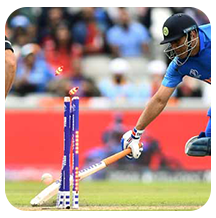
Run out is one of the most exciting as well as disappointing modes of dismissal in cricket. There are different ways in which a batter can be run out during the game and it applies for batters at both ends. This mode of dismissal comes under the law 38 and the run out applies when a fielder collects the ball and hits the stumps while the batter is out of the crease during the field of play. The batter has to make sure that he puts some part of his body across the line before the fielder disturbs the stumps with the ball.
The time the bail is removed from the stumps and hits the turf is considered as the instant when that wicket is put aside. A run out dismissal usually occurs when the batters are trying a run. A run out, on the other hand, can happen if the batsman just stumbles or walks outside from their stance and the wicket is taken away by a player. Run outs are frequently near misses, and also the umpire makes the bulk of the decisions. In test cricket, run outs are less prevalent, accounting for only 3.46% of wickets lost. In limited overs cricket, those figures are likely to rise, although this is still a rather unusual occurrence.
There is also another instance where the baller could run a batter out at the non-striker end without actually delivering the ball. The rule states that the batter has to keep the ground inside the crease till the point in which the bowler delivers the ball. This act was earlier termed as ‘Mankand’ following Indian batsman Vinoo Mankad, who was the first to execute this kind of run out in a Test match. After much controversy, this type of dismissal is now termed as legal and a part of the run out section.
Stumped
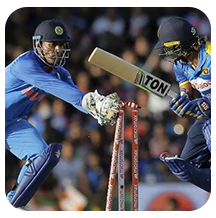
Stumped can be termed as a shorter version of the run out that is particularly done by a wicketkeeper. The wicket keeper is allowed to collect the ball and disturb the stumps after the batter has attempted to play the ball. This particular mode of dismissal comes under the law 39 section and it is stated that the act can be performed when the batter tries to leave the crease to play a shot. The batter has to make sure that some part of his body is left behind the popping crease after advancing to play a stroke. If the wicket keeper disturbes the stumps after collecting the ball that passed the bat of the striker, then the batter will be ruled out if he fails to make it back inside the crease by the time the bails are disturbed. There is a small juncture between a stumping and a run out. If the batter has only left the crease in order to play the ball, then it would come under stumping and on the other hand if the batter had run down the crease then it would come under the run out section.
According to data on stumped dismissals, 2.02% of test batters are out in this method. Likewise, under limited overs arrangements, that figure might rise, but stumped is expected to stay the fifth most prevalent manner of being dismissed.
Hit Wicket
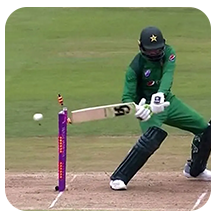
Hit Wicket dismissals are comparatively rare in cricket matches and comes under the law 36 of cricket. Hit wicket happens when a batter intentionally or non intentionally breaks the wicket with their bat or any part of their body while attempting to play a stroke. It also includes other parts of equipment like helmets to fall off onto the stumps to dislodge the bails off a legal delivery. Hit wicket dismissals are extremely unusual in all versions of the sport with 0.230% of all dismissals happening in this method. Even though there are several instances in which the hit wicket has occurred in international cricket, Roy Fredericks’ trod on his stumps after hitting the ball for six during the 1975 world cup is a highly memorable instance.
Obstructing the Field
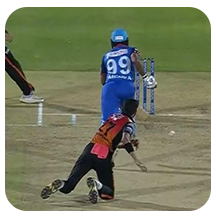
Obstructing the Field replaces the now ‘handled the ball.’ It is addressed by Law 37, that stipulates that when the batter willfully impedes the defending team with their presence, speech, or other acts, he may be called out. A challenge for blocking the play is usually granted if a batter intentionally inhibits a player from completing a straightforward catch. One typical dismissal happens when a batter alters their path to avoid being run out. The fielding team must register a challenge, so both umpires can discuss before making a judgment. We’re currently in the region of true oddities, with blocking the field accounting for fewer than 0.01% of dismissals. Ben Stokes, for instance, was thrown out in an ODI versus Australia in 2015 after he accidentally touched the ball.
Hit the Ball Twice
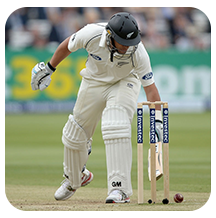
Hitting the ball twice is the manner in which a batter is declared out for hitting the ball twice using his bat. This type of dismissal comes under the law 34 for cricket and is rarely seen in international cricket. The dismissal implies when a batter has struck a ball and thereafter he makes contact with the ball following the stroke with his bat. The ball can make a second contact after hitting any part of their body or cloth. The batter is allowed to defend the ball from going on to the stumps using their body except their hands. In this way, the batter is allowed to preserve his wicket. This is yet another rejection with a proportion level well below 0.01. This is another uncommon type, trailing only delayed out. There haven’t been any occurrences of Hit the Ball Twice in test cricket, with just 21 such dismissals in all forms as of now.
Timed Out
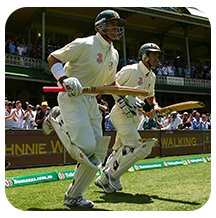
There is a certain timespan available for every batter to take the field which is a maximum of three minutes. They have to quickly occupy the crease to face the next delivery. The fielding side is allowed to appeal if they feel that the batter is taking more time which is affordable to him. The on field umpire has the liberty to call the batter as timed-out in this case. This particular mode of dismissal comes under the law 40 of cricket and is also one of the rarest types of dismissals witnessed in cricket. It is so rare that till now, there are no recorded dismissals in test cricket, even though six batters have been dismissed in this manner in the prolonged first class cricket history.
Retired Out
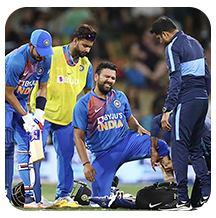
A batter is allowed to leave the field during his batting innings for any valid reasons. This usually happens when a batter is unable to continue owing to injuries of some kind of incapitivity. This must be undertaken only with the umpire’s permission, but if the explanation is evident and permissible, they will undoubtedly approve it. Nevertheless, if a batter departs the pitch sans authorization or for an unjustified cause, they may be dismissed as retired out. This has occurred on odd instances, and it generally happens when a batter departs the field to give their teammates some more opportunity at the wicket. As a result, the phrase ‘retired out’ will frequently feature on a scoresheet during practice matches.
This kind of dismissal has never occurred in a test match and it is highly unlikely that a batter is going to retire out in this particular format. We have seen R Ashwin imply this kind of dismissal to strategically make way for power hitters in his side during end overs. This type of dismissal is more common in initial tour games, when a batsman departs after getting a high score to allow his colleagues more opportunities at the wicket.









